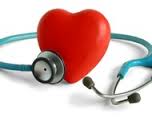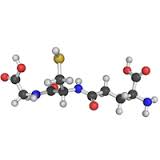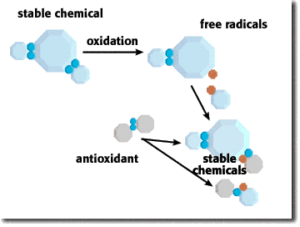 Recently I listened to an interview with a reputable heart specialist. What he had to say was so important I knew I had to share the information. What follows contains so much direct quote and paraphrase of things said in the interview that I am sure it is violating somebody’s copyright. I hope they will understand. This is not a transcript of the interview; it contains excerpts of key messages.
Recently I listened to an interview with a reputable heart specialist. What he had to say was so important I knew I had to share the information. What follows contains so much direct quote and paraphrase of things said in the interview that I am sure it is violating somebody’s copyright. I hope they will understand. This is not a transcript of the interview; it contains excerpts of key messages.
About Dr. Harrington
Dr. Douglas Harrington earned his B.A. in Molecular Biology and his M.D. from the University of Colorado. He is board certified in atomic and clinical pathology and hematology. He is a member of the American Society of Preventive Cardiology. He has authored over 90 peer-reviewed publications.
Facts About Heart Disease
Heart disease is the greatest cause of death in the United States.
Since 2010, more women in the United States are having heart attacks than men. Five times as many women die from heart attacks than die from breast cancer. Heart disease is the primary killer of women, taking more lives than all forms of cancer combined.
An American Heart Association study of hospitalization of people with a first heart attack from unstable angina showed 83% had normal cholesterol levels. If you look at all people who had heart attacks, 50% had normal cholesterol. (So some historical assumptions about the causes of heart disease may be incorrect.)
The World Health Organization (WHO) did an inter-country study that looked at 32 countries. They determined that 90% of heart disease is due to lifestyle. 80% of that is preventable by actions the person can take themselves.
The Cause of Heart Disease
Most people think that heart disease is fundamentally a ‘plumbing problem’. That is not the case.
Free radicals are produced in excess by the body in response to a variety of factors like exposure to environmental toxins and eating excess amounts of certain types of foods like sugar. The cells in your body perform a lot of work trying to get rid of these substances and in so doing produce excess amounts of free radicals. (Refer to the article Get Rid of the Radicals.)
When free radicals come in contact with the artery walls, they damage the lining of the arteries in your heart. This is the start of heart disease. Over time this damage can evolve to become lesions.
Lesions on the wall of the arteries from the free radical damage are like blisters or pimples. They don’t cause any symptoms; they don’t cause pain; and they don’t restrict blood flow. But when the lesions ‘pop’, which they are prone to do if they become unstable, they cause an immediate blood clot. That is the most common cause of heart attacks and strokes.
How to Prevent or Reverse This Damage
There are several things you can do to help the situation:
- Exercise
- Diet
- Medications
- Supplements
Exercise
Exercise can help prevent or reverse lesions damage – but not just any exercise. The most beneficial is exercise in the form of resistance training like weight lifting or doing push-ups. Cardio exercise is good for burning calories and increasing the the strength of you heart and the fitness of your cardiovascular system. But it does not do much to convert unstable lesions to a level of stability; it just makes your heart do more work.
Diet
A “Mediterranean Diet” will help.
Historically the medical community focus has been on bloodstream cholesterol. However, the advice given in the past to avoid saturated fats is probably wrong. Trans fats are deadly. On the other hand animal fat, like butter, in reasonable quantities is actually good for you.
Excess sugar, excess refined carbs, and excess deep fried foods in the diet should be avoided. Certain types of oils like soy bean oil with preservatives should also be avoided. These things set up an environment in our body that allows or promotes the production of free radicals.
Grass fed beef can be good and has about the same amount of omega-3 as wild caught fish. But penned beef that is fattened up and fed chemicals to keep them healthy and gain weight are a problem. Farmed fish is problematic because of the omega-6, hormones, antibiotics and other substances. But wild caught fish like salmon is very healthy. Unfortunately much of the commercial fish in the market comes from fish farms.
Avoid processed foods. If you pick up something in the grocery store and you need an advanced chemistry degree to understand what is on the list of ingredients, you probably should not eat it.
Artificial man-made chemicals, whether in our food, in our water or in our air are a principal cause of free radicals. And high levels of free radicals is the root cause of heart disease.
Medications
Certain medications like statins will also help stabilize arterial lesions. But the down side is that they have a lot of negative side effects.
Supplements
You must ensure that your body has an adequate amount of necessary vitamins and minerals. Some of this can be supplied by your diet. However, you may have to augment that with nutritional supplements. Mass farming techniques have reduced the level of nutrients in much of the food that we buy so supplementation has become a necessity.
In addition to exercise and a healthy diet, the most effective thing you can do is to help your body get rid of the free radicals that are produced.
The body’s master antioxidant is glutathione. It is produced by every living cell in the body. But usually production of glutathione is insufficient, particularly in face of the onslaught of substances that produce free radicals.
However, glutathione is an endogenous antioxidant. That means that it originates from within the body. You can’t get much glutathione from food. The only effective way to raise your glutathione to scavenge the free radicals is to take a supplement that has a necessary glutathione precursor.
It was interesting, but not surprising, to note that Dr. Harrington recommended the use of the same supplement that I use to increase glutathione levels. Even after adopting a healthy diet you are still exposed to huge numbers of environmental toxins, so you need some way to enhance glutathione levels.
The Challenge
Because heart disease has little in the way of noticeable symptoms like pain or discomfort, doing the right things appears to show no improvement that can be felt. So people tend not to do what needs to be done to remove the threat.
The objective of prevention is to keep you out of the hospital. Understand that doing the things necessary to keep you healthy may not show obvious signs – other than you not experiencing a sudden life threatening event.
The Risk
Consider this scenario. You have blood pressure in the normal range. You have cholesterol readings in an acceptable range. You are not excessively overweight. According to your doctor you are pretty healthy. Your diet is not as healthy as it should be; but you feel fine. The first indication that you have heart disease is a sudden heart attack. There is a 50% probability that this heart attack will be fatal.
If you want to avoid that you must, at the very least, eat healthier and increase your intracellular glutathione levels – even if you currently feel healthy.
Addendum: Dr. Harrington and his team has developed a test for the existence of unstable arterial lesions. What this means is that you can have a clear indication of the risk of having a heart attack within the next five years. This is a simple blood test that is currently available in the United States and other countries. A positive result may allow the person to take corrective action in time to avoid the heart attack.
#heartdisease #glutathione #heartattack

 In this day and age there are far too many of them. They are responsible for the deaths of untold numbers of people. Left unchecked they will continue to maim and kill. And you can do something about it. They must be neutralized and eliminated!
In this day and age there are far too many of them. They are responsible for the deaths of untold numbers of people. Left unchecked they will continue to maim and kill. And you can do something about it. They must be neutralized and eliminated! Antioxidants are stable molecules that have electrons to spare. When antioxidants come in contact with free-radical molecules – they hand over their electrons and stop the degenerative chain reaction of free-radical oxidation.
Antioxidants are stable molecules that have electrons to spare. When antioxidants come in contact with free-radical molecules – they hand over their electrons and stop the degenerative chain reaction of free-radical oxidation.